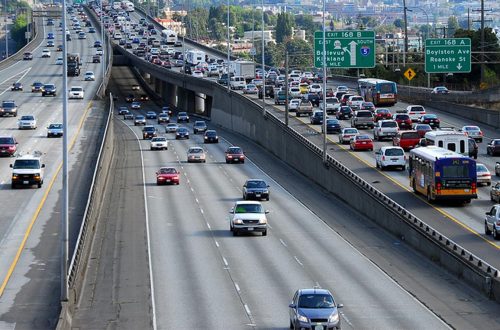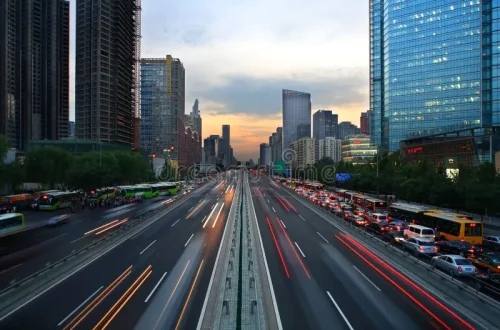Public transportation is the lifeblood of our cities, and in the 21st century, it is undergoing a technological renaissance. The future of public transit is one that is smart, connected, and sustainable, leveraging the power of data and technology to create a more efficient, user-friendly, and environmentally responsible system.
Data analytics is at the heart of this transformation, enabling transit authorities to optimize routes, schedules, and resource allocation in real-time. The integration of on-demand services and micro-mobility options, such as e-scooters and bike-sharing programs, is providing commuters with more flexible and convenient first- and last-mile solutions. Furthermore, the transition to electric and other sustainable forms of energy is reducing the carbon footprint of our public transit fleets. As our cities continue to evolve, so too will our public transportation systems, creating a more seamless, sustainable, and equitable mobility experience for all.
The digital transformation of public transit begins with the collection and analysis of vast amounts of data from various sources. GPS tracking on buses and trains provides real-time location information, while passenger counters and ticketing systems generate ridership data. Mobile apps and digital payment platforms offer insights into customer behavior and preferences. Weather sensors, traffic monitoring systems, and social media feeds can all contribute to a comprehensive understanding of the factors affecting public transportation. Advanced analytics and machine learning algorithms process this data to identify patterns, predict demand, and optimize operations.
Real-time information systems have become essential for modern public transit, providing passengers with accurate arrival times, service alerts, and route recommendations through mobile apps and digital displays at stations. This transparency not only improves the passenger experience but also enables more efficient use of the system by allowing riders to make informed decisions about when and how to travel. Predictive maintenance systems use sensor data from vehicles and infrastructure to identify potential issues before they become critical, reducing downtime and improving reliability.
The integration of various transportation modes is a key aspect of 21st-century public transit, creating seamless multimodal networks that make it easier for passengers to complete their journeys. Mobile ticketing systems allow riders to pay for multiple modes of transport with a single app or card, eliminating the need to purchase separate tickets for buses, trains, and other services. First- and last-mile solutions such as bike-sharing, e-scooters, and ride-sharing services are being integrated into public transit networks to address the challenge of connecting passengers to and from transit stations.
Sustainability is a driving force behind the modernization of public transit systems, with many cities transitioning to electric buses, trains, and other zero-emission vehicles. These electric fleets not only reduce air pollution and greenhouse gas emissions but also offer a quieter, smoother ride for passengers. Renewable energy sources such as solar panels on transit facilities and regenerative braking systems on trains further enhance the environmental benefits of public transportation. The shift toward sustainability aligns with broader urban planning goals to create greener, healthier cities.
On-demand and flexible transit services are emerging as important complements to traditional fixed-route systems, particularly in areas with lower population density or during off-peak hours. These services use algorithms to dynamically route vehicles based on real-time demand, offering a more efficient use of resources while maintaining convenient service for passengers. Microtransit services, which operate like shared taxis but follow general routes, bridge the gap between fixed-route transit and traditional ride-sharing, providing flexible options for areas that are underserved by conventional public transportation.
Equity and accessibility are critical considerations in the evolution of public transit, ensuring that new technologies and services benefit all members of the community. Digital divide issues must be addressed to ensure that passengers without smartphones or internet access can still access and use public transportation. Physical accessibility improvements, such as low-floor buses, wheelchair ramps, and audio-visual announcements, are being implemented to make transit systems more inclusive. fare capping and reduced fare programs help ensure that public transportation remains affordable for low-income residents.
The COVID-19 pandemic has accelerated the adoption of contactless technologies in public transit, from mobile ticketing to touchless fare payment systems. Enhanced cleaning protocols, improved ventilation systems, and occupancy monitoring have become standard features of modern transit systems. These changes, initially implemented as emergency measures, are likely to become permanent features that improve the overall passenger experience and public health outcomes.
As we reimagine public transit for the 21st century, the focus is on creating systems that are not only more efficient and sustainable but also more responsive to the needs of diverse communities. The connected commute of the future will leverage technology to create seamless, personalized travel experiences while maintaining the core mission of public transportation: providing affordable, accessible mobility for all. The integration of emerging technologies such as autonomous vehicles, artificial intelligence, and the Internet of Things will continue to shape the evolution of public transit, making it an even more vital component of sustainable urban development. The success of this transformation will depend on thoughtful planning, community engagement, and continued investment in the public good that is transportation.





